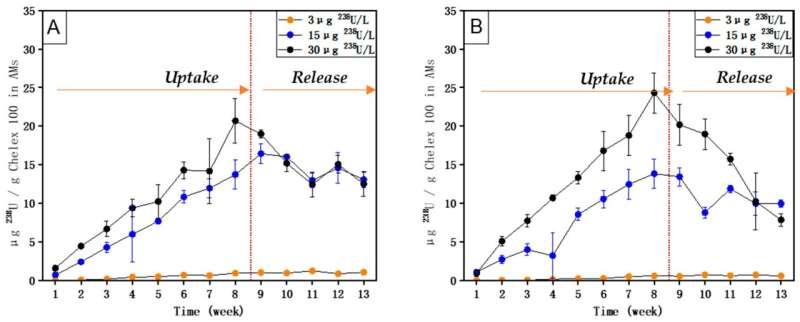This article has been reviewed according to Science X's editorial process and policies. Editors have highlighted the following attributes while ensuring the content's credibility:
fact-checked
proofread
Cross-institutional study on the use of artificial mussels to monitor radioactivity in the ocean

Amid the global concern over the pollution of radioactive wastes in the ocean, The Education University of Hong Kong (EdUHK), the City University of Hong Kong and The University of Hong Kong have conducted a cross-institutional study, which has found that "artificial mussels" (AMs) can effectively measure low concentrations of radionuclides in the sea. It is believed that this technology can be applied as a reliable and effective solution for monitoring radioactive contamination around the world.
Akin to natural mussels, the AMs—invented more than a decade ago by Professor Rudolf Wu Shiu-sun of the Department of Science and Environmental Studies at EdUHK—have a remarkable ability to soak up a variety of metals, and therefore can be used to measure the concentration of metallic pollutants in the marine environment. As of today, AMs have already been in use in 29 countries around the world.
Addressing the problem of radioactive pollution in the ocean, Professor Wu and his team in 2022 selected three radioactive substances (uranium, strontium and caesium), commonly found in nuclear waste and disposal, as research targets. The research team then placed the AMs in seawater containing various concentrations of radionuclides, in an attempt to test the devices' absorption and releasing abilities.
Following a series of experiments, results showed that it only takes seven to eight weeks for the AMs to complete the absorption process. After that, they release the radioactive substances on returning to clean seawater, demonstrating that the device can provide a reliable estimate on the concentration and variation of these radionuclides in seawater. The results have been published in the Journal of Marine Science and Engineering.
Unlike existing methods, using AMs does not require collecting hundreds of liters of seawater for concentration and analysis, therefore saving the required manpower and cost for sampling and pre-treatment. The cost of each AM is just US$1 (approximately HK$8), making it viable for long-term and large-scale monitoring of nuclear wastewater.
Professor Wu said, "The risks posed by nuclear wastes to marine ecology and human health cannot be underestimated. The study confirms that AMs can resolve the limitations presented by traditional detection methods. The device can play a role in safeguarding environmental and food safety, as it offers authorities around the world a practical and cost-effective way to monitor radionuclides in waters."
More information: Yi Yang et al, Artificial Mussels: A New Tool for Monitoring Radionuclides in Aquatic Environments, Journal of Marine Science and Engineering (2023). DOI: 10.3390/jmse11071309
Provided by Education University of Hong Kong (EdUHK)




















